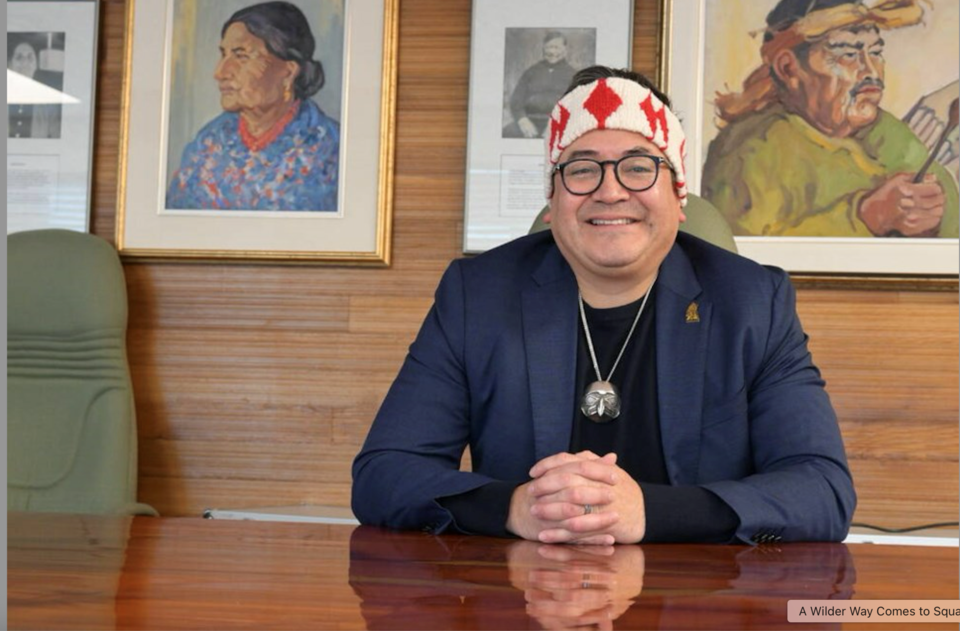The results are in.
Sḵwx̱wú7mesh Úxwumixw (Squamish Nation) members have spoken, and some significant changes are coming to how they are governed.
On May 31, Election and Referendum Law voting wrapped up with in-person ballots cast at polling stations in Squamish at Totem Hall and in Chief Joe Mathias Centre in West Vancouver.
All told, 899 members voted—both online and in person.
There are 3,300 eligible voters within the Nation.
The changes will be implemented this fall for the Squamish Nation General Election on Sept. 28.
Changes resulting from the vote
For a change to happen, a minimum of 60% of the votes cast for each question had to be in favour of the change.
Meaning, if 1,000 members voted on a question, at least 600 would need to vote for a particular option for it to pass.
Increased council seats
On the question of whether members wanted the size of the Nation council to continue to be eight or grow to 16 councillors, the membership voted in favour of increasing the council to 16.
The current council consists of one chairperson and seven councillors.
Considerations members had to weigh with this question included the cost of increasing the number of leaders. As of last year, elected officials' salaries and benefits totalled about $90,000 per councillor. However, moving to 16 also represented honouring the intent at amalgamation, 102 years ago, when sixteen Sḵwx̱wú7mesh villages amalgamated to become the modern Nation.
Regional representation removed
On the question of whether to keep the three dedicated seats for North Shore, Squamish Valley and regional councillors (who represented members outside the other two regions) or have all electors vote for all councillors, the Nation went with the latter.
This means there will no longer be dedicated seats for specific regions.
Only one family member allowed on council
On the question of whether to limit the number of immediate family members who are elected to Nation council, and how many relatives should be allowed, members voted to allow only one immediate family member to sit on council at a time.
Currently, there is no restriction on the number of family members who can sit on council.
Longer to speak at People's Assembly
On the question of whether to keep the two-minute speaking limit at a People’s Assembly or increase the time to five minutes per speaker, members voted for more time.
The People's Assembly is a formal meeting of the council and the membership that is held three times per year.
What members voted not to change
Immediate family definition
In terms of the definition of immediate family, as it relates to the number of relatives allowed to sit on the council at the same time, members were given two definitions to choose from.
The first is defined as a small immediate family consisting of a mother, father, spouse, brother, sister, son, or daughter of the candidate.
The second was defined as a large immediate family that also includes a niece, a nephew, a grandparent or a grandchild of the candidate.
The members decided to keep the small family definition that was already in place.
Members choose council chair
Finally, to the question of whether or not members wanted to change from the current system whereby all voters choose the council's chairperson, or they wanted the council to choose the council chairperson, the electors stuck with their ability to choose the chair.
‘Positions us to protect the integrity of who we are’
Sxwixwtn Wilson Williams, spokesperson and council member, said the results give the Nation a strong path forward.
“Our people have spoken and given us a clear direction for our governance structure going forward. The new structure best positions us to protect the integrity of who we are as a Nation today, while also recognizing where we come from and our rich history,” he said.
“Having 16 councillors again reflects the origin of our Nation, when 16 Squamish families decided they would be stronger together, and came together to amalgamate in 1923,” he added.
“Our people have shared with us the challenges they experienced over the past four years with regional representation. They want to be able to vote for everyone on council and have our elected officials lead in the best interest of the entire Nation.
“I also want to recognize we are a young Nation. And it was extremely heartening to see the level of participation from our young people. It was exciting to see so many of our youth involved in the democratic process, including my eldest daughter, who just turned 18 and voted for the very first time,” he continued.
“The results of this referendum ensure efficiency, equality, and fairness for our future.”
The Electoral Commission—comprising representatives from various regions and demographics within Sḵwx̱wú7mesh Úxwumixw—oversees elections and referendums.
In an open letter addressed to Nation membership, Donalene Rapada, chair of the Electoral Commission, said the group was "very pleased" with the referendum turnout.
"On behalf of the Electoral Commission, we hold our hands up to each and every one of you that came out to vote for these historic changes,” she said.
To learn more about the referendum results, go to the Squamish Nation’s website.



